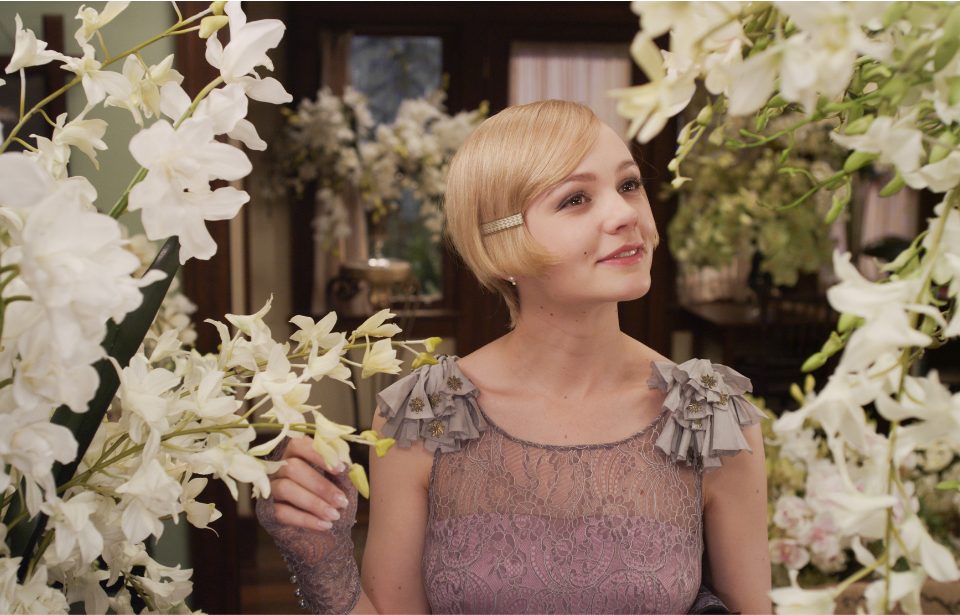The newest trend in hairstyle fashion is that side-parts are out, and middle-parts are in (sorry millennials!) Hairstyles change rapidly and it’s often difficult to keep up with what is the hottest hair trend of the year. Luckily, we have broken down all the popular hairstyles of the past two centuries to ensure you don’t make any silly mistakes when styling your hair – like sporting a side part!
1800s
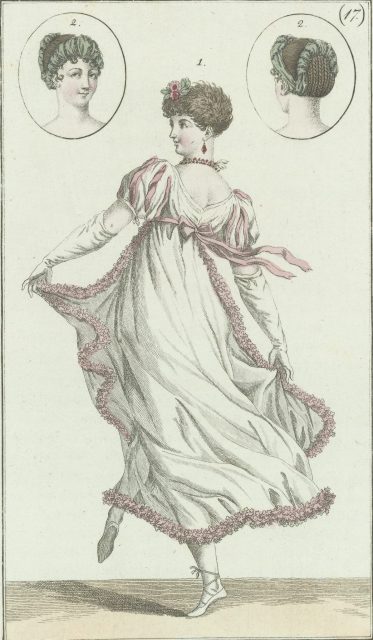
The start of the nineteenth century was marked by women wearing their hair in short, pixie cuts. Longer hair often framed their faces so that it could be curled. Women who did not want to cut their hair would style it to appear shorter than it actually was. This type of style is thought to have originated when Marie Antoinette appeared for her execution with badly shorn hair.
1810s
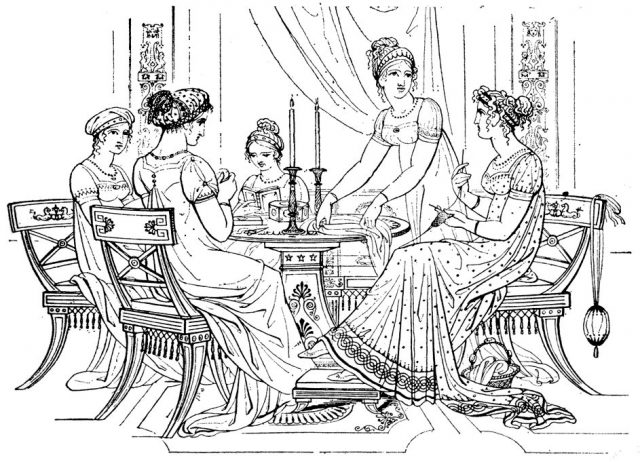
In the 1810s, trendy hairstyles featured buns. Hair was styled into a bun or a type of upswept braid in the back of the head and secured with some sort of accessory that further accentuated the hair – whether that be a scarf, shawl, turban, or ribbon. Working-class women often had their buns in bonnets rather than accentuated with accessories.
1820s
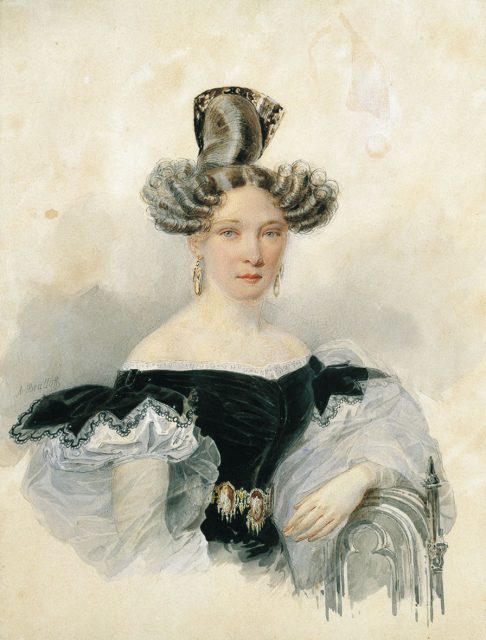
Elaborate hairstyles became a mark of one’s social class in the 1820s. Elaborate loops, curls, and trident-like shapes were often seen on upper-class women in the 1820s to display wealth and status.
1830s
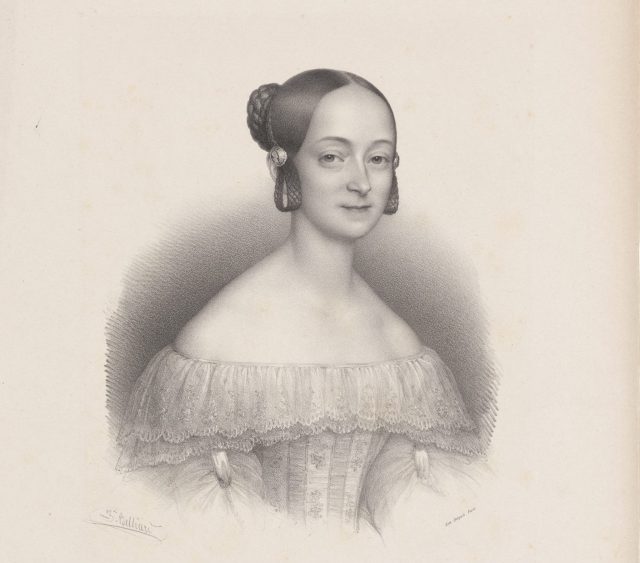
By the 1830s, Western women began to embrace a hairstyle that would dominate the Victorian era. Hair was parted in the center, and slicked down to the side of the head. The look was accentuated with sections of the hair in front of the ears in braids, loops, or curls, while the hair in the back was held in place with a bun or a braided bun.
1840s
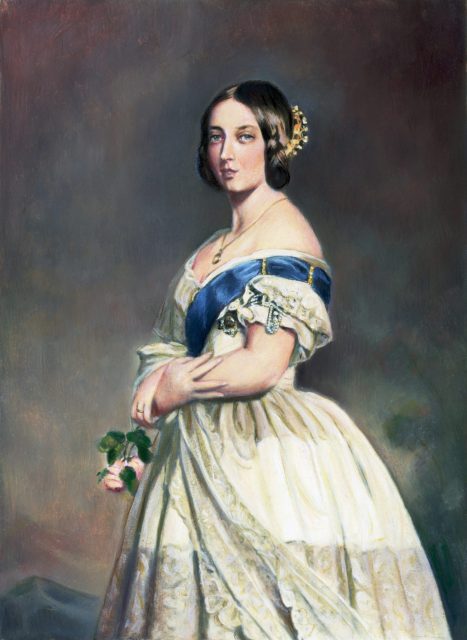
When Queen Victoria came to power in 1837, she embraced the type of hairstyle that had been in vogue in the 1830s. Having one’s hair down in the 1830s and 1840s was considered scandalous. Hairstyles in the 1840s were basically the same as those popular the decade before. The main variation to this hairstyle was that the sides of the hair could be slightly more teased to give the look a bit more volume.
1850s
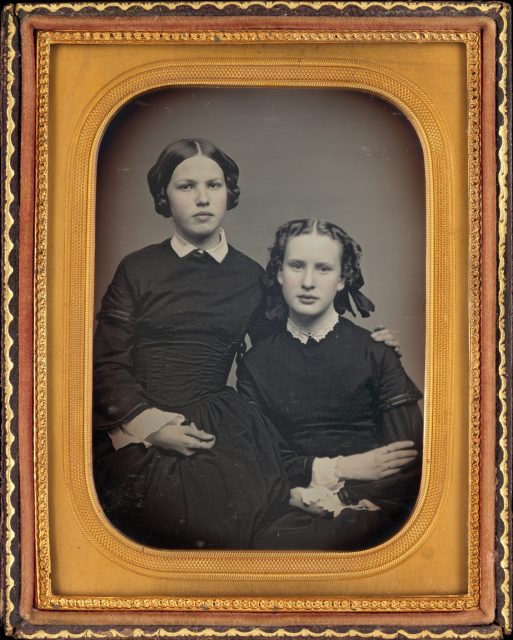
In the 1850s, parting one’s hair in the center remained popular, as was a bun in the back. However, decorations were now added to the style, such as ribbons. A more elaborate style of braiding was also becoming popular (as can be seen above) that gave this version of the Victorian era hairstyle some intricacies.
1860s
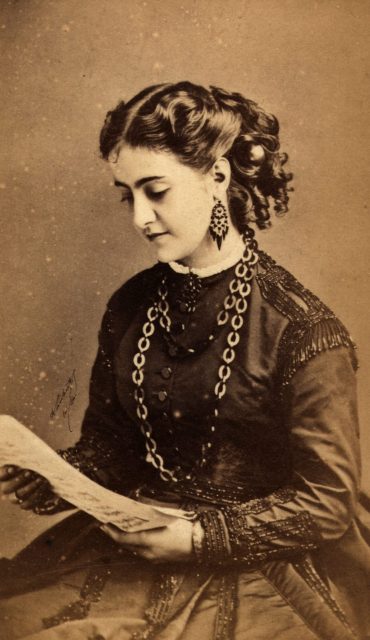
For the first time, hairstyles popular in the 1860s allowed for women to build up their hair a bit more. By this decade, more complicated hairstyles were emerging, including hair parted in a Y-style, or on the side. Different twists, braids, and curls were added to embellish the styles.
1870s
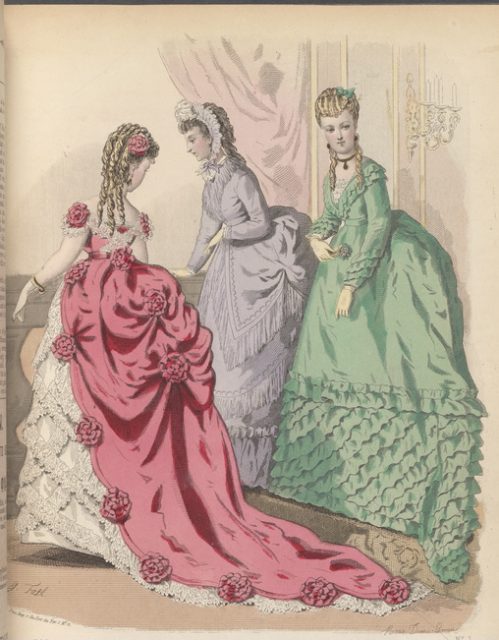
In the 1870s, women would wear their hair in a half-up, half-down style, with curls being exposed in the back. However, most women continued to wear their hair up rather than all the way down their backs for their everyday activities.
1880s
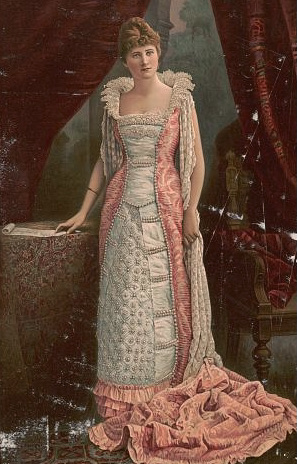
The 1880s saw the growth in the height of different hairstyles rather than building out the back. Short, curled, bangs in the front of the face were often added to soften the look of these new styles.
1890s
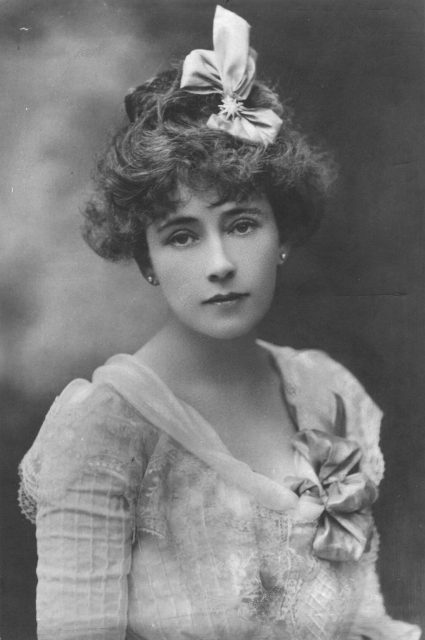
Hairstyles continued to increase in volume into the 1890s. Women commonly wore their hair with curled and with fluffed-out bangs, as seen above.
1900s
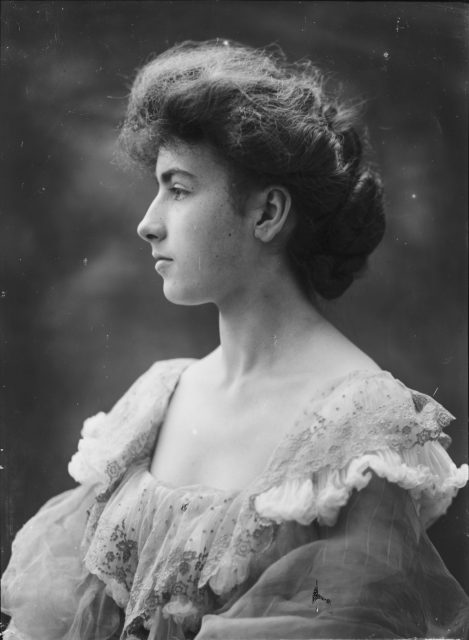
The turn of the twentieth century was marked by Charles Dana Gibson’s “Gibson Girl,” who was seen as the modern woman of the 1900s. These ladies were depicted with huge hairstyles, making them very tall. Many women sought the height of the Gibson Girl, and as such they would both curl their own hair, and use false hair, to obtain these tall styles.
1910s
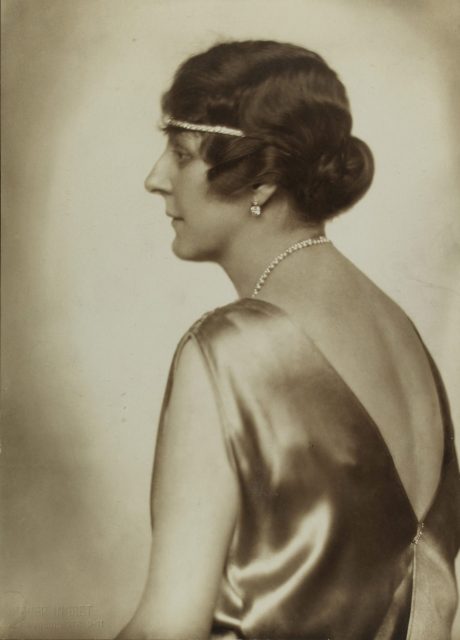
Women’s hairstyles had already gone through a drastic change in the first decade of the twentieth century. As the flapper era quickly approached, women were moving away from the huge, Gibson girl hairstyles of the early 1900s toward shorter cuts. Women styled their hair in ways that made them appear to have shorter hair, marked with lots of curls and waves around the face.
1920s
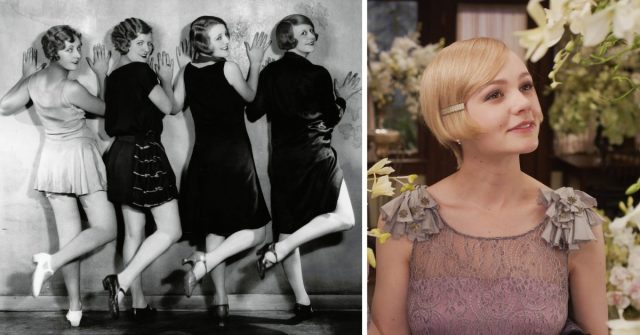
The 1920s was a decade where women were deciding to cut their hair short. Although they had been pinning their hair into a faux bob style, by the 1920s, women were deciding to cut their extra hair off. Women wore their bobs both straight and wavy, but the Marcel wave was the most popular silhouette of the 1920s.
1930s
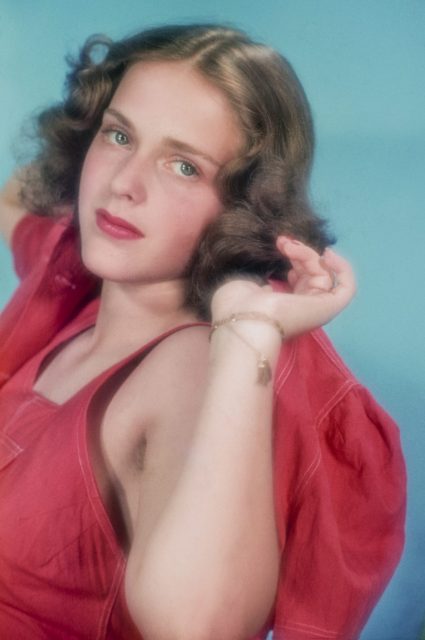
Women of the 1930s decided to keep their hair cut short, but there were typically fewer waves at the top of the head. Although the Great Depression caused many women to forgo accessories in the 1930s, hair was still maintained at a short and fashionable length.
1940s
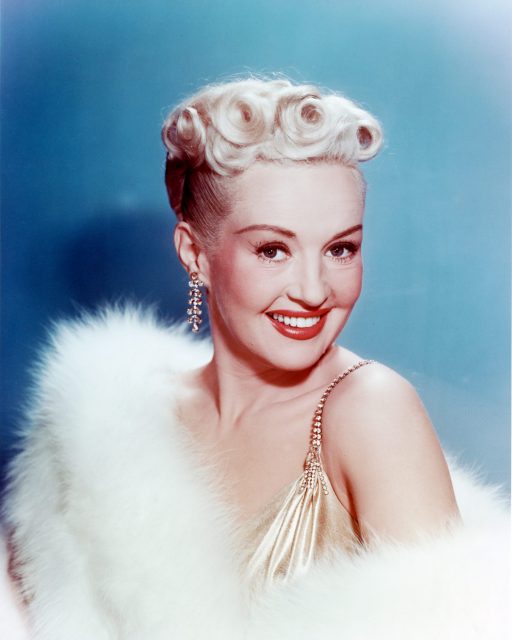
Voluminous hairstyles were made popular in the 1940s by stars such as Betty Grable (pictured above). Styles with names such as bumper bangs, the victory roll, and the s-wave all were in their hay-day during the 1940s.
1950s
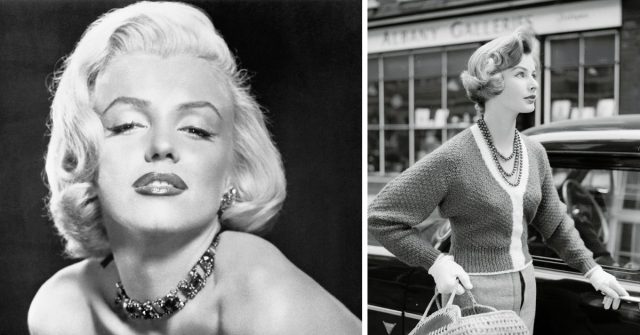
Movie stars such as Marilyn Monroe (pictured above on the left) had American women embracing shorter hairstyles. These cropped and curled looks were very easy for busy women to maintain, and had the added benefit of being considered to be very sultry and fashionable. Short hair in different decades was seen as a youthful style, but in the 1950s, short hair was a sign of being very womanly and grown-up.
1960s
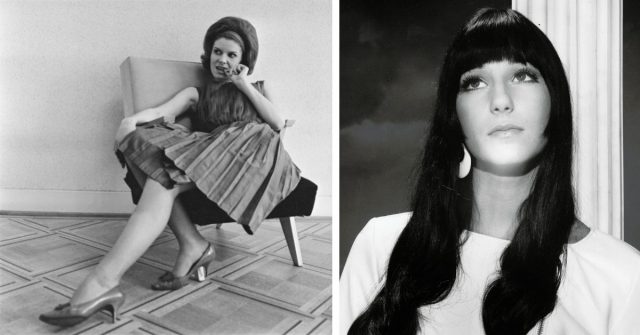
The 1960s saw two major popular hairstyles for women, mimicking the drastic changes occurring in American society. The start of the 1960s was marked by a voluminous style of shorter hair. The top was typically uncurled and required a heavy dose of back-combing and hairspray to achieve the height of this style (pictured on the left). By the end of the decade, with the ushering in of the hippie movement, women were wearing their hair long and straight with minimal volume.
1970s
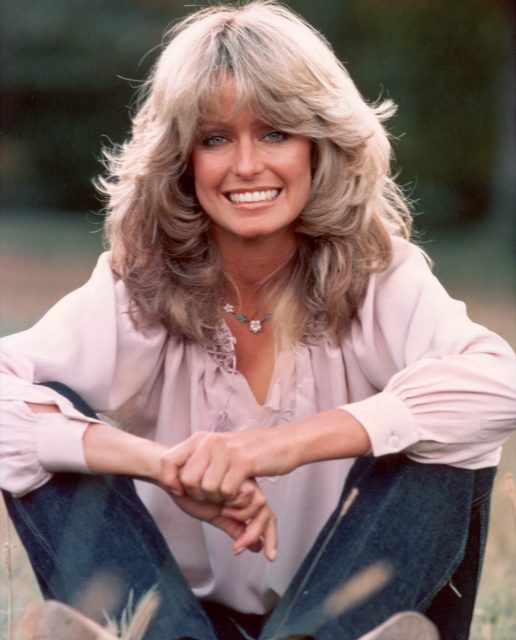
The early part of the 1970s continued to be marked by long, straight hair parted in the middle. However, by the end of the 1970s, stars like Farah Fawcett (pictured above with her iconic hairdo) were making feathered hairstyles, with lots of layers, popular in American society.
1980s
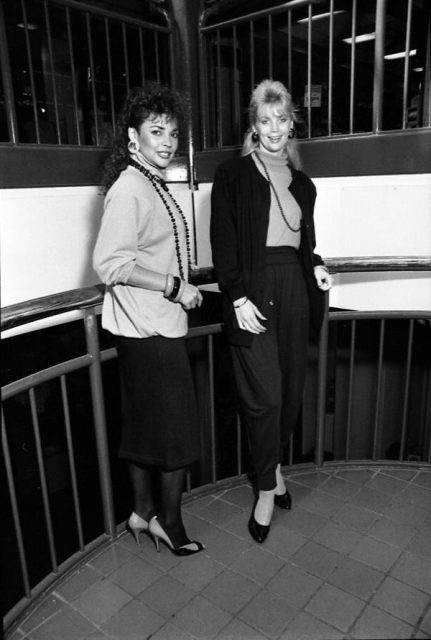
In the 1980s, the bigger the hairstyle, the better. Perms, curled hair, feathered bangs, and tall hairdos were trademarks of ’80s hair. Interestingly, heavy metal bands popularized the trend of crimped, bleached hair that was adopted by young women of the 1980s.
1990s
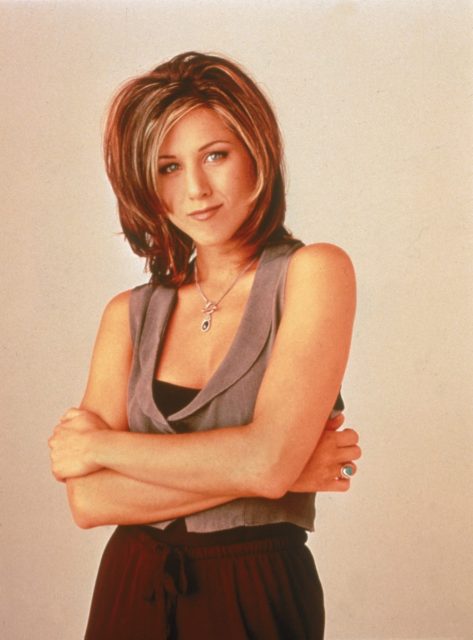
By far, the most popular hairstyle of the 1990s was “the Rachel,” made popular by Jennifer Aniston’s character on the sitcom Friends. “The Rachel” style was straight with a slight curl in toward the face at the ends. Styles from the 1990s seem to be having another moment right now, so perhaps “the Rachel” is coming back into style!
2000s
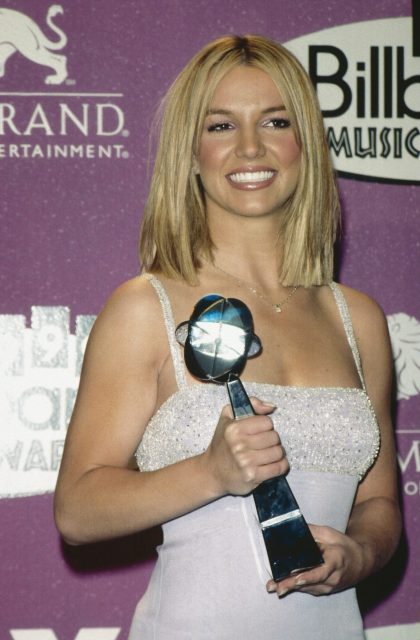
Styles in the 2000s were marked by straight hair with blunt layers in the front. The look was stick straight, and any life in the hairstyle came from layers rather than curls or shape.
2010s
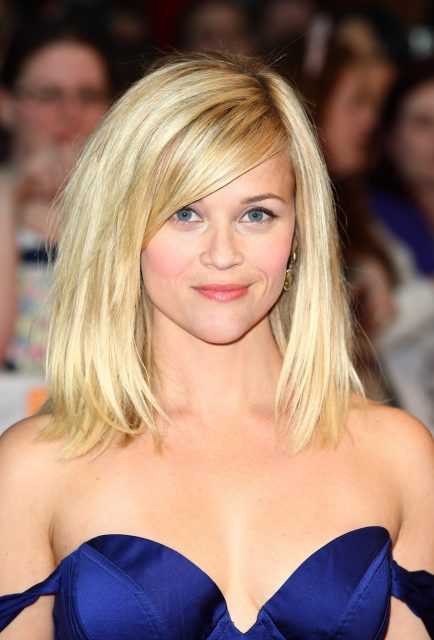
More from us: The Gibson Girl Was The Turn Of The Century’s “Ideal” Woman, Independent And Feminine
The 2010s were marked by side bangs and a side part. The trends from the 2010s were going strong into the 2020s, but Gen-Zer’s have made it known that this hairstyle is out!! However, history does repeat itself so if you aren’t willing to give up this hairstyle just yet, we are sure it will come back around eventually.
